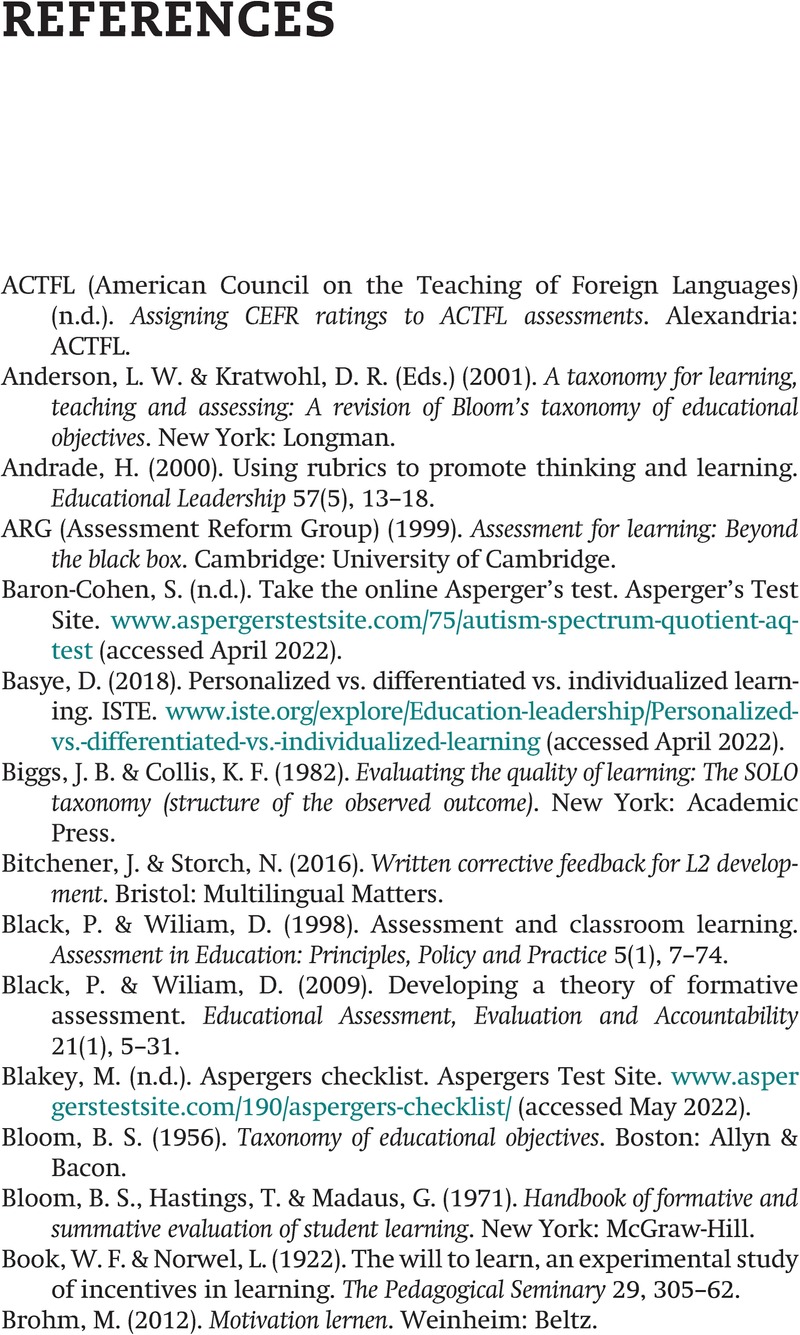Book contents
- From Assessment to Feedback
- From Assessment to Feedback
- Copyright page
- Contents
- TEFL Examples
- Introduction
- Part I Basic Concepts of Assessment and Feedback in the Foreign-Language Classroom
- Part II Assessment and Feedback in Its Different Manifestations
- Part III Summative Assessment in Combination with Formative Feedback
- Glossary
- References
- References
References
Published online by Cambridge University Press: 19 January 2023
- From Assessment to Feedback
- From Assessment to Feedback
- Copyright page
- Contents
- TEFL Examples
- Introduction
- Part I Basic Concepts of Assessment and Feedback in the Foreign-Language Classroom
- Part II Assessment and Feedback in Its Different Manifestations
- Part III Summative Assessment in Combination with Formative Feedback
- Glossary
- References
- References
Summary

- Type
- Chapter
- Information
- From Assessment to FeedbackApplications in the Second/Foreign Language Classroom, pp. 261 - 268Publisher: Cambridge University PressPrint publication year: 2023

